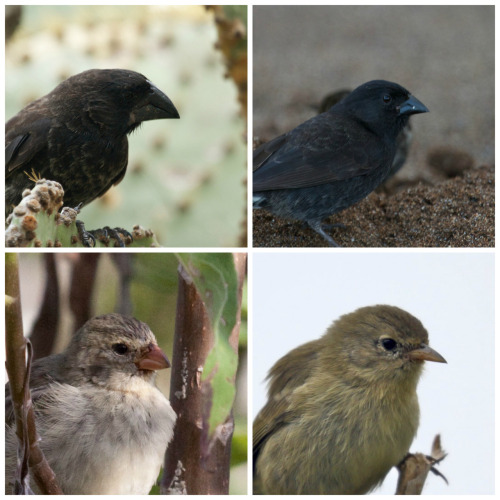Darwin’s Finches Then and NowAlthough Charles Darwin has been strongly associated with the fin
Darwin’s Finches Then and NowAlthough Charles Darwin has been strongly associated with the finches of the Galapagos Islands since returning on the Beagle, he was himself initially unaware of their importance. Focused on geology and not trained in ornithology, Darwin left the collection of most bird samples to an assistant. Upon his return to England in 1837, Darwin presented a large collection of preserved birds to The Geological Society of London, and entrusted the collection to John Gould for study. Although he kept careful notes on geology and many types of animals and even other birds, the finches were almost an afterthought. Upon examination, however, Gould began to see their similarities and realized their importance to understanding transmutation. Gould was so shocked by what he found that he presented his findings a week later, saying he had analyzed a series of ground Finches which are so peculiar [as to form] an entirely new group, containing 12 species…This analysis was striking enough to make the newspapers that month. Darwin would later write:The remaining land-birds form a most singular group of finches, related to each other in the structure of their beaks, short tails, form of body and plumage: there are thirteen species, which Mr. Gould has divided into four subgroups… The most curious fact is the perfect gradation in the size of the beaks in the different species of Geospiza, from one as large as that of a hawfinch to that of a chaffinch, and (if Mr. Gould is right in including his sub-group,Certhidea, in the main group) even to that of a warbler. The largest beak in the genusGeospiza is shown in Fig. 1, and the smallest in Fig. 3; but instead of there being only one intermediate species, with a beak of the size shown in Fig. 2, there are no less than six species with insensibly graduated beaks. The beak of the sub-group Certhidea, is shown in Fig. 4. The beak of Cactornis is somewhat like that of a starling, and that of the fourth subgroup,Camarhynchus, is slightly parrot-shaped. Seeing this gradation and diversity of structure in one small, intimately related group of birds, one might really fancy that from an original paucity of birds in this archipelago, one species had been taken and modified for different ends.The scientific binomials for these birds come straight from their common names in Ancient Greek: the family of thraupidae (which contains all the birds above) comes from the Ancient Greek word thraupis (θραυπίς) meaning a small bird. The rest can almost be guessed at: magnirostris meaning large beak, parvula meaning small or diminutive, fortis meaning strong. The word geospiza comes from the Ancient Greek words gaia (γαῖα) meaning land, country or ground and spiza (σπίζα) meaning a finch or chaffinch.Image of geospiza magnirostris and geospiza fortis courtesy Brian Gratwicke.Image of geospiza parvula (now named camarhynchus parvulus) courtesy Mike Comber.Image of certhidia olivacea courtesy Francisco Laso.All used with permission under a creative commons 3.0 license. -- source link
Tumblr Blog : kidsneedscience.tumblr.com
#darwin#science#evolution#etymology#ornithology

